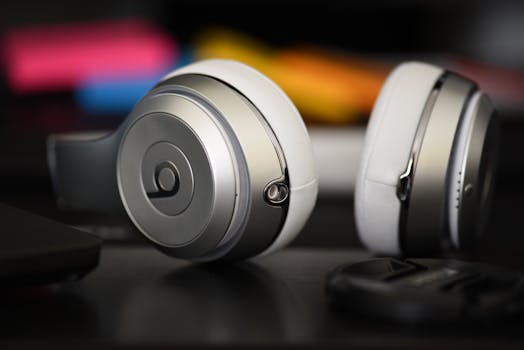Headphone burn-in: does it really improve sound quality, or is it just audiophile folklore? We delve into the science and the subjective experiences to separate fact from fiction, helping you decide if this practice is worth your time.

Introduction
The audiophile world is rife with debates, and one of the most enduring is the concept of headphone burn-in. The idea is that new headphones need a period of 'exercise' before they reach their optimal sound quality. Proponents claim that running sound through headphones for a certain number of hours loosens up the drivers, resulting in improved bass response, clearer highs, and a more balanced overall sound. But is there any truth to this, or is it simply a placebo effect fueled by confirmation bias? Let's dive in and explore the science, the anecdotes, and everything in between.
What is Headphone Burn-In?
At its core, headphone burn-in is the process of playing audio through new headphones for an extended period, typically ranging from 40 to 200 hours, before critically listening to them. The belief is that this process 'loosens' the headphone drivers, which are the components responsible for producing sound. These drivers consist of a diaphragm, voice coil, and magnet, all working in concert to convert electrical signals into audible vibrations.
# The Theory Behind Burn-In
The proponents of burn-in suggest that the diaphragm, being stiff when new, needs to be 'broken in' to achieve its full potential. This is often compared to breaking in a new pair of shoes or a car engine. The argument is that the initial stiffness prevents the diaphragm from moving freely, thus hindering the headphone's ability to reproduce sound accurately. By playing audio at varying frequencies and volumes, the diaphragm is supposedly stretched and conditioned, leading to improved flexibility and responsiveness.
The Skeptical View: Science vs. Subjectivity
While the burn-in theory sounds plausible, the scientific evidence supporting it is limited. Most objective measurements of headphone performance show little to no significant change after extended use. Critics argue that any perceived improvement is likely due to a combination of factors:
- Brain Adaptation: Our brains are incredibly adaptable. Over time, we become accustomed to the sound signature of our headphones, leading us to perceive improvements that may not actually exist. This is known as auditory accommodation.
- Placebo Effect: The belief that burn-in works can influence our perception of sound. If we expect our headphones to sound better after burn-in, we're more likely to perceive them as such, regardless of any actual change.
- Manufacturing Variations: Slight variations in manufacturing can lead to differences in sound between individual headphones, even within the same model. These differences may be more noticeable than any changes caused by burn-in.
Practical Examples and Tips
So, should you bother with headphone burn-in? Here's a practical approach:
1. Listen First: Before any burn-in, spend some time listening to your new headphones to establish a baseline impression of their sound. This will help you better assess any perceived changes later.
2. If You Choose to Burn-In: If you decide to try burn-in, use a variety of audio tracks with varying frequencies and dynamic ranges. Avoid playing audio at excessively high volumes, as this could potentially damage the drivers.
3. Use White/Pink Noise: Some people use white noise or pink noise for burn-in. These signals contain a broad spectrum of frequencies, which can help exercise the drivers evenly. You can find these online or generate them using audio editing software.
4. Don't Overdo It: There's no need to obsess over hundreds of hours of burn-in. If you're going to try it, 40-100 hours is generally considered sufficient. After that, any further changes are likely to be minimal.
5. Focus on Enjoyment: Ultimately, the most important thing is to enjoy your headphones. Don't let the burn-in debate detract from your listening experience. If you're happy with the sound, that's all that matters.
Conclusion
The debate surrounding headphone burn-in is likely to continue. While some audiophiles swear by it, the scientific evidence remains inconclusive. Whether or not burn-in actually improves sound quality is a matter of personal perception and belief. The most important thing is to enjoy your headphones and focus on the music. Experiment, listen critically, and draw your own conclusions. In the end, the best headphones are the ones that sound best to you.
